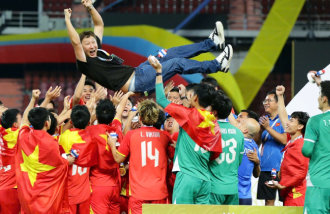Saemaeul Movement in Congo
The Democratic Republic of Congo is 11 times larger than the Korean Peninsula and has abundant natural resources. Its per capita income, however, was a mere 171 U.S. dollars last year. Congolese President Joseph Kabila rose to power in 2001, when he was chief of staff of his countrys military, after the assassination of his father and then president Laurent-Désiré Kabila.
Congos main weapon in its battle against poverty is the Saemaeul (New Community) Movement of Korea, which began in April 1970. Dr. Frey Lungula N`Kumu, who received education on saemaeul leadership in Korea in 2004, asked for Seouls cooperation with his countrys development. He called the movement the most appropriate model for the development of Africa. A saemaeul organization was formed in Kinshasa in 2004, and now has 1,075 members in three cities and provinces, seven counties and 18 villages. The Korean government plans to invite 12 Congolese nationals, including saemaeul leaders, to Korea for training and support of two model villages.
China in a 2006 forum also discussed using Koreas Saemaeul Movement in its new rural policy. Attending the forum were some 200 senior Chinese leaders, including President Hu Jintao. The head of a Chinese delegation who participated in an investor relations session in Seoul Monday for investment in Hunan province also said he wants to spread the movement among farmers in the province.
As of the end of last year, some 47,000 people from 74 countries had come to Korea to learn about the Saemaeul Movement, which is an economic development model for other developing countries and a national brand of Korea. The movement is proving to be helpful to people around the world to develop their nations. Pro-North Korea leftist forces in South Korea, however, say the movement and the countrys subsequent industrialization driven by the campaign was a tool for justifying the dictatorial regime of the 1970s. On the 40th anniversary of the Saemaeul Movement, which is now a major Korean export item, it is time for Korean to view their history with unbiased eyes.
Editorial Writer Park Seong-won (swpark@donga.com)





![넘치는 전재수 과거 사진들…유죄의 증거일까, 무죄의 증거일까[청계천 옆 사진관]](https://dimg.donga.com/c/138/175/90/1/wps/NEWS/IMAGE/2025/12/20/132997378.1.jpg)

